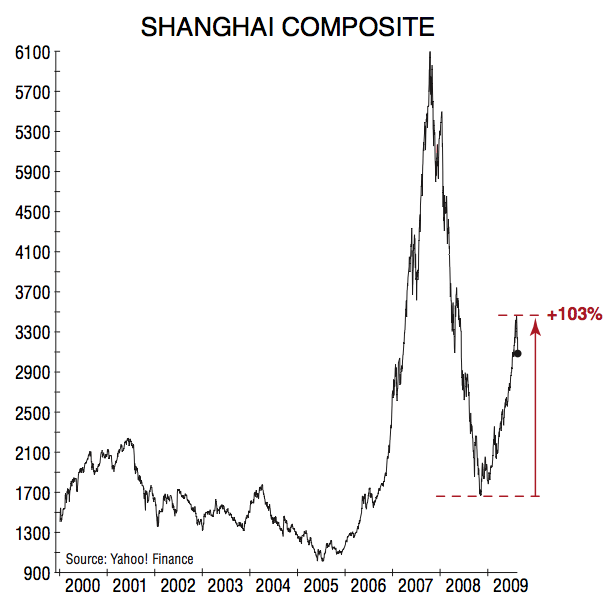From The Big Picture:The Asian sell-off is one of the dominating market stories on Monday. In particular, attention is focusing on the spill-over from China’s recent equity slide and into more open markets like Hong Kong.
The chart below, of the Shanghai Composite, shows the degree of the turnaround in Asian sentiment.
As can be seen in the Hang Seng, meanwhile, there’s some indication that weeks of range-bound trading are beginning to break support.
So how important is the above, considering Chinese GDP and other economic indicators are still the envy of the world? Historical evidence would suggest extremely so — China’s indices have presented themselves as a major lagging indicator for the rest of the world’s markets of late.
Meanwhile, there’s increasing anecdotal evidence that China’s economic situation could be no more than a contrary indicator for recovery — this is particularly so with regard to its recent spate of epic commodity stockpiling, now seen as unsustainable going into the second half of the year....MORE
...Here is what the Shanghai Index looked like prior to today’s fall:
chart courtesy of Investech
From PhysOrg:
New insights into the 'smell of death' could help recover bodies in disasters and solve crimes
August 17th, 2009
Researchers say that a chemical profile of decomposition could eventually lead to a portable device for detecting human bodies at crime scenes and disaster areas. Credit: Adam Dylewski, American Chemical Society
In an advance toward the first portable device for detecting human bodies buried in disasters and at crime scenes, scientists today report early results from a project to establish the chemical fingerprint of death. Speaking here at the 238th National Meeting of the American Chemical Society (ACS), they said a profile of the chemicals released from decomposing bodies could also lead to a valuable new addition to the forensic toolkit: An electronic device that could determine the time elapsed since death quickly, accurately and onsite....
...Decomposing bodies release more than 30 compounds. Some, like the aptly-named "putrescine" and "cadaverine," develop early in the decomposition process. Past studies used donated human bodies that were two to three days old. As a result, these studies were unable to detect putrescine, cadaverine, and other compounds that appear very early in the decomposition process....


